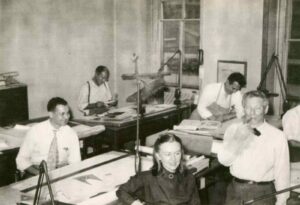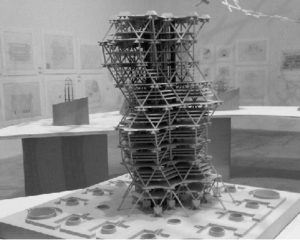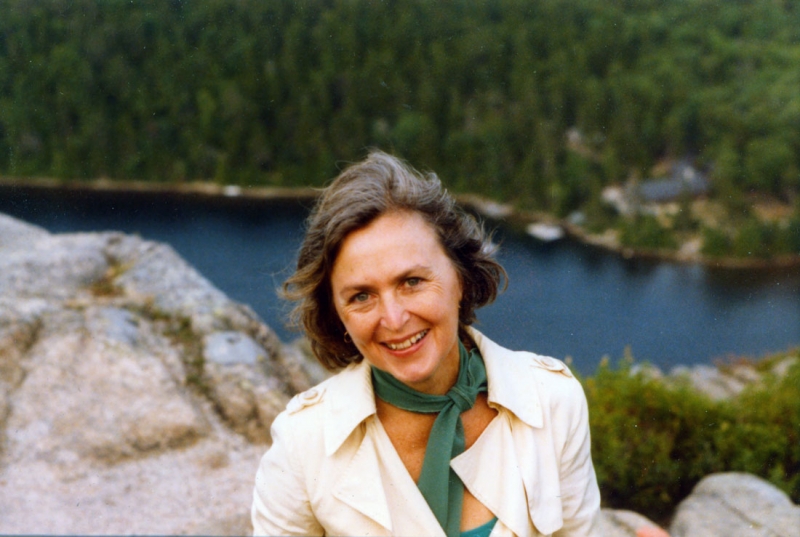As part of our ongoing “Women in Architecture” series, we’re spotlighting someone who was at the forefront of architectural experimentation in the mid-twentieth century, Anne Tyng. Tyng pioneered the inclusion of complex geometry as a source for form in architecture and design and became an expert in the field. Learn more about her extraordinary life and work below:
The Life of Anne Tyng
Anne Griswold Tyng was born in Lushan, Jiangxi province, China, on July 14, 1920. Although her family lived in China at the time, their roots traced back to the Massachusetts Bay colonies, and they frequently visited the United States for family trips. Tyng’s love for design sparked when she was just a child, and she often recalled how she would carve whole cities out of the soft stone surrounding her family’s properties.
At 18, Tyng moved permanently to the U.S., where she attended Radcliffe College in Cambridge, MA, to study fine arts. During her final year, however, she discovered the Cambridge School of Architecture and Landscape Architecture — the first institution to provide design training to women only — and began taking classes there.
After her graduation in 1942, she went on to further her architecture studies at Harvard, studying with renowned architects like Marcel Breuer and Bauhaus founder Walter Gropius. In 1944, Tyng was among the first women to complete their studies at Harvard, and later she became the only woman to enter the architecture licensing exam in 1949. Tyng finished her education nearly 30 years later when she was awarded a Ph.D. from the University of Pennsylvania.

Photo courtesy of the Anne Griswold Tyng Collection and the Architectural Archives of the University of Pennsylvania
In 1945, Tyng moved to Philadelphia and began working for Louis Kahn’s architecture firm, Stonorov and Kahn. Khan and Tyng became close collaborators, and her passion for geometric form influenced many of the firm’s designs of the time. In 1964, she left the firm, where she had been a partner, and began developing more solo projects until the end of her career.
Notable Work and Achievements
Although she became a successful architect, Tyng was also passionate about mathematics. Thanks to the versatility and flexibility of architecture, this allowed her to conflate her interests and focus on space frame architecture — creating light-filled spaces using interlocking geometric forms of architecture.

Many of Tyng’s earliest works can be traced back to the influences she left in Kahn’s designs, including the Yale University Art Center (1953), Philadelphia City Tower (1957) and the Trenton Bath House (1956), all of which included triangles or cubes in their forms. However, her former residence, the Tyng House, is where her personal style is most celebrated.
Built in the 1950s, the single-family home features slotted windows, a pyramidal timber-framed ceiling and metal screened openwork staircases. And although the exterior of the house appears ordinary at first, a closer look reveals a mansard roof and large parlor-floor windows.
In the late 1960s, after falling in love with Maine’s Mount Desert Island, Tyng designed the Four-Poster House. In her design, Tyng took inspiration from the surrounding ecology, and she strived to make the home an organic outgrowth of the wooded area. Using logs, cedar shake and tree trunks, the house was framed similar to a four-poster bed with four central columns.
Alongside her transformative work, Tyng has been a recipient of many architecture awards and achievements, including:
- First woman licensed as an architect in the state of Pennsylvania
- Fellow of the American Institute of Architects, 1975
- Academician of the National Academy of Design, 1975
- Selected by the United States to participate in the First International Congress of Women Architects, 1976
Tyng’s career was devoted to understanding the synthesis of geometrical shape and human consciousness within architecture, and because of her extraordinary contributions, the spatial potential of architecture was pushed further than ever before.

